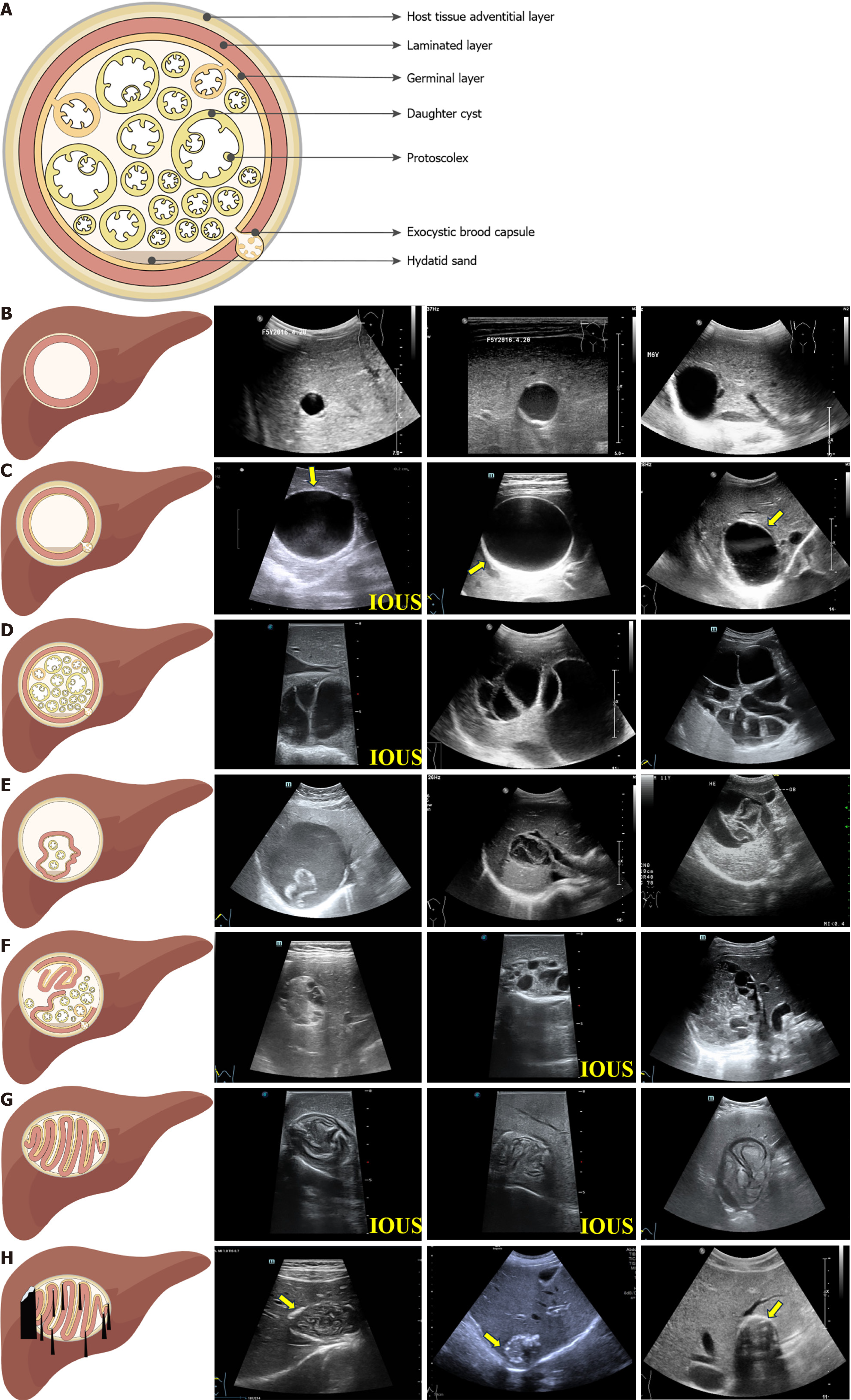Copyright
©The Author(s) 2024.
World J Gastroenterol. Oct 7, 2024; 30(37): 4115-4131
Published online Oct 7, 2024. doi: 10.3748/wjg.v30.i37.4115
Published online Oct 7, 2024. doi: 10.3748/wjg.v30.i37.4115
Figure 1 Schematic diagrams and grayscale ultrasound images of hepatic cystic echinococcosis.
A: Schematic structure of hepatic cystic echinococcosis (HCE); B: Hepatic cystic lesions: Hepatic cystic lesions are characterized by indistinct cyst walls, which can be more effectively visualized using high-frequency ultrasound transducers; C: HCE1: HCE1 lesions manifest as spherical, homogeneously echogenic cystic masses, characterized by the presence of “double cyst wall” (the yellow arrow)and “snowflake” signs; D: HCE2: HCE2 lesions are characterized by “nested cysts” or “daughter cysts” and wheel-, petal-, or honeycomb-like appearances; E: HCE3a: Features of HCE3a lesions include the “water lily” sign and “ribbon” sign; F: HCE3b: HCE3b lesions manifest as cystic and solid masses with mixed echogenicity; G: HCE4: HCE4 lesions present alternating hypoechoic and hyperechoic masses, characterized by “ball of wool” and “cerebral gyri” signs; H: HCE5: HCE5 lesions refer to hyperechoic patches on the basis of the “cerebral gyrus” sign, with thickened and calcified cyst walls accompanied by a broad posterior acoustic shadow, referred to as the “eggshell calcified wall” sign (the yellow arrow). IOUS: Intraoperative ultrasound.
- Citation: Tao Y, Wang YF, Wang J, Long S, Seyler BC, Zhong XF, Lu Q. Pictorial review of hepatic echinococcosis: Ultrasound imaging and differential diagnosis. World J Gastroenterol 2024; 30(37): 4115-4131
- URL: https://www.wjgnet.com/1007-9327/full/v30/i37/4115.htm
- DOI: https://dx.doi.org/10.3748/wjg.v30.i37.4115









